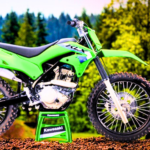The Legendary Yamaha RX 100: A Timeless Icon
The Yamaha RX 100 is not just a motorcycle; it’s a legacy cherished by bike enthusiasts worldwide. yamah rx 100 Launched during the mid-1980s.
RX 100 revolutionized its category with a unique blend of performance, style, and reliability. Even years after production ceased, it retains its status as one of the most admired motorcycles ever built.
The Origins of the Yamaha RX 100
Introduced in 1985, the Yamaha RX 100 entered the Indian market when commuter bikes focusing on fuel efficiency dominated the scene. It offered an alternative for riders who wanted speed, agility, and dependable performance.
With its 98cc, two-stroke engine producing 11 horsepower and a top speed close to 100 km/h, it outperformed most competitors in its class.
Yamaha envisioned the RX 100 as a power-packed yet accessible bike, and it quickly became a favorite among young riders. Its immense success earned it the reputation of being a “street king.”
Features and Specifications of the RX 100
The RX 100’s design struck a perfect balance between form and function. Here’s an overview of its standout features:
- Engine: A robust 98cc, air-cooled, single-cylinder, two-stroke engine delivered an impressive 11 HP at 7500 RPM, providing thrilling acceleration.
- Transmission: The 4-speed gearbox ensured smooth and precise gear changes, making it suitable for urban and highway rides.
- Design: Lightweight at just 103 kg, the bike sported a classic look with chrome detailing and a round headlamp that exuded timeless charm.
- Performance: The RX 100 was renowned for its quick acceleration, reaching 0-60 km/h in just about 7 seconds.
- Durability: Crafted with premium materials, the bike could withstand years of use with minimal maintenance.
Why the RX 100 Became a Phenomenon
- Power-to-Weight Ratio
One of the RX 100’s standout features was its excellent power-to-weight ratio, providing a thrilling riding experience. It outperformed larger, heavier bikes of its era effortlessly. - Distinctive Exhaust Note
Its unique exhaust sound became iconic, symbolizing speed and performance during the 80s and 90s. - Ease of Maintenance
Its simple mechanical design made it easy to repair and maintain, even for amateur mechanics. The availability of spare parts further enhanced its practicality. - Versatility
The RX 100 excelled in both urban traffic and long-distance riding, thanks to its lightweight frame and powerful engine.
The Cultural Impact of the RX 100
Beyond its technical excellence, the Yamaha RX 100 became a cultural symbol of freedom and individuality. Its sporty design and impressive performance made it a favorite among the youth, while its appearances in movies and advertisements elevated its status as an aspirational product.
Today, it remains a collector’s item. Restored RX 100s are highly sought after, with enthusiasts investing significant time and effort in bringing these bikes back to their former glory. Some restored models now fetch premium prices in resale markets.
Challenges and Discontinuation
Despite its overwhelming popularity, Yamaha discontinued the RX 100 in 1996. Stricter emission norms and the rise of four-stroke engines forced the company to phase out its two-stroke lineup.
Another challenge was its fuel consumption. Compared to emerging fuel-efficient bikes, the RX 100’s mileage lagged, which became a concern for the cost-conscious market.
The RX 100 in the Modern Era
Decades after production stopped, the RX 100 remains a symbol of classic motorcycling. Restored and customized models continue to turn heads, keeping the legacy alive. Vintage bike rallies often showcase these machines, reflecting their enduring appeal.
Restoration enthusiasts have kept the RX 100 relevant by upgrading its features while maintaining its retro look. From vibrant paint jobs to modern safety enhancements, the bike has successfully blended the old with the new.
Modifications and Customization
The RX 100’s simple design makes it ideal for customization. Popular modifications include:
- Performance Boosts: Enhanced exhaust systems, upgraded carburetors, and improved air filters for better speed and efficiency.
- Visual Enhancements: Custom seats, modern lighting, and unique paint schemes for a personalized aesthetic.
- Safety Features: Additions like disc brakes or broader tires for enhanced control and safety.
These modifications ensure the RX 100 continues to appeal to new generations of riders.
Tips for Restoring and Maintaining an RX 100
Owning or restoring an RX 100 is a rewarding experience. Here are some tips for preserving its charm:
- Choose Genuine Parts: Authentic Yamaha parts ensure reliability and performance.
- Regular Servicing: Keep the engine well-lubricated and clean for optimal functionality.
- Preserve Originality: While modifications can enhance performance, maintaining the bike’s original essence adds to its nostalgic value.
The Future of the Yamaha RX 100
Rumors occasionally surface about Yamaha reintroducing the RX 100 in a modern avatar, equipped with an eco-friendly engine to meet current standards. While no official confirmation exists, the idea has sparked excitement among fans.
A revamped RX 100 would undoubtedly appeal to both vintage enthusiasts and contemporary riders.
Conclusion
The Yamaha RX 100 is more than just a motorcycle; it’s a testament to an era where passion for riding and engineering excellence defined motorcycling. Its enduring legacy is a reminder of the joy of unadulterated biking, free from unnecessary complexities.






